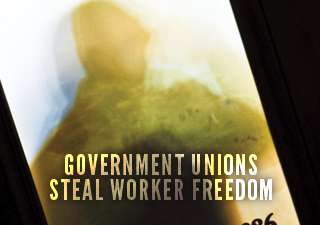Commentary

Labor Day is for Taxpayers, Not Unions
As the sun sets on a sizzling summer, celebrations with family and friends will mark another Labor Day. But few citizens will recall or cheer the nationwide railroad union strike featuring violence and vandalism ending with military intervention that led to the first such federally recognized holiday in 1894.
Unfortunately, those turbulent times of the late 19th century may revisit us soon. But this time, it won’t be because labor unions rail against a corporation, it will come through a “strike” against the American taxpayers like they recently did in Wisconsin.
Today, organized labor is a shell of its former self—at least in the private sector. Since 1973, total union membership across the country has declined from 24 percent of the working population to just 11.8 percent in 2011. In Pennsylvania, unionization rates fell by more than 50 percent between 1983 and 2011. The loss of nearly 663,000 union members over this period occurred while Pennsylvania added more than 1 million employees.
But for those who see this as a sign for celebration—that workers no longer see the need for unions in the workplace—a far more destructive threat to Pennsylvania still lingers.
It’s found in the government sector, where unions like the Pennsylvania State Education Association, the American Federation of State, County and Municipal Employees, the United Food and Commercial Workers and the Service Employees International Union have actually increased their grip on public employees’ paychecks and those of the taxpayers who fund them.
Thanks to legislatively provided privileges that allow unions to force dues and fee payments as a condition of employment, more than 50 percent of all state and local government employees are in a labor union. Meanwhile in the private sector, less than 9.3 percent of employees collectively bargain.
Unfortunately, what was once hailed as a mechanism to ensure fairness in pay and benefits for government labor has become a weapon of inequity that hurts both the workers it intended to protect and the taxpayers who wished to protect them. When government unions gained collective bargaining in the late 1950s, something President Franklin D. Roosevelt and the AFL-CIO once ardently opposed, they received the ability to negotiate with the very politicians they help hire and fire. The game now turned to a clear conflict of interest where government unions could support candidates then lobby those same politicians to raise taxes and spend more on programs that benefit those unions.
Naively, one might think a Pennsylvania with the most conservative governor and biggest Republican House and Senate majorities in modern state history would be different in 2012. And while true these very legislators, placed there by an electorate clearly demanding an end to these inequities, have reversed some poor policies, they are neither showing the guts nor earning the glory of their colleagues in other states who are taking on budget-busting programs and winning.
The reason is clear: It is not the Democratic Party or the Republican Party that wields a legislative majority in Pennsylvania, it is the Union Party.
Comprising the government employee unions, private sector unions, trial lawyers, extreme greens, and other nonprofits that feed off taxpayer money, the Union Party is aligned for a single purpose: To use the American political system to extract the greatest amount of income and wealth as possible for the benefit of but a few.
In essence, behind every government program today, you will find the Union Party defending unsustainable spending and lobbying to increase it. With politicians enabled by government union funding that fights against even the most modest changes to budget-busting programs like defined-benefit public pensions and prevailing wage, voters can start to understand why no-brainers like ending Pennsylvania’s Prohibition-era, government-run wine and liquor stores are thwarted.
According to the National Institute on Money in State Politics, government union political action committees doled out significant cash to both Democrats and Republicans alike. Between 2004 and mid-2012, 196 out of 251 sitting state legislators, including 93 out of 139 Republicans, received government union campaign cash. In total, six major government union PACs contributed nearly $12 million during this time.
Quite simply, there’s a lot of money in politics because it is politicians that determine who gets your money. But if we’re to veer clear of the financial cliff the Union Party is taking us over, the Taxpayer Party—blue and white collar workers joined by their families and entrepreneurs that refuse government handouts—must become the majority party in Pennsylvania once again.
# # #
Matthew J. Brouillette is the president and CEO of the Commonwealth Foundation (www.commonwealthfoundation.org), Pennsylvania’s free-market think tank.